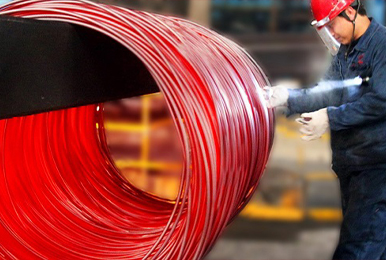Aug . 07, 2024 20:35 Back to list
Top Manufacturers of Wall Panels for Building Materials and Construction Solutions
Building Materials The Evolution and Significance of Wall Panels
In the world of construction and design, wall panels have emerged as one of the most significant building materials. These panels, often made from wood, metal, or composite materials, provide structural support while also enhancing the aesthetic appeal of a space. The evolution of wall panel technology has revolutionized the way buildings are constructed, leading to efficient, sustainable, and aesthetically pleasing designs.
The Evolution of Wall Panels
Historically, walls were constructed using heavy materials like brick and stone, which dictated not just the weight but also the design of a building. However, with the advent of industrialization and technological advancements, wall panels began to emerge as a viable alternative. Manufacturers started producing prefabricated wall panels that could be easily transported and installed, significantly reducing construction time and costs.
The 20th century saw improvements in materials and manufacturing processes, leading to the rise of engineered wood products, insulated panels, and metal cladding systems. Today, modern wall panels come in a variety of forms, including structural insulated panels (SIPs), cement boards, and vinyl siding, tailored to meet specific thermal, acoustic, and aesthetic requirements.
Advantages of Wall Panels
One of the main advantages of wall panels is their efficiency. Prefabricated panels can be manufactured in controlled factory environments, which leads to better quality control and reduces the risks associated with weather-related delays on site. This streamlined approach allows builders to complete projects faster, saving both time and money.
Wall panels also contribute to energy efficiency. Many contemporary panels are designed with insulation properties that help regulate indoor temperatures, reducing the reliance on heating and cooling systems. For instance, structural insulated panels have a core of foam insulation sandwiched between two structural facings, providing superior energy efficiency that meets or exceeds building codes.
building materials wall panels manufacturer

Additionally, wall panels can enhance the aesthetic value of a building. With a wide range of materials, colors, and finishes available, architects and designers have the freedom to create visually striking facades that can reflect the building's purpose or the culture of its surroundings. Whether it's sleek metal for a modern office building or textured wood for a cozy home, wall panels allow for versatile design solutions.
Environmental Considerations
As sustainability becomes more critical in construction practices, wall panels have also adapted to meet these needs. Manufacturers are increasingly focusing on sourcing sustainable materials and producing panels that are recyclable or made from recycled content. For instance, some wall panels are made from rapidly renewable resources, such as bamboo, or incorporate recycled waste products. This shift not only reduces the environmental impact of construction but also appeals to eco-conscious consumers and builders.
Moreover, the installation of wall panels can minimize construction waste. Traditional building methods often lead to considerable waste, but because wall panels are prefabricated, they can be produced to precise measurements, significantly reducing excess material.
The Future of Wall Panel Manufacturing
The future of wall panel manufacturing looks promising, driven by advancements in technology and growing demands for sustainable solutions. Innovation in materials, such as the development of smart panels equipped with sensors or integrated technology for energy monitoring, is on the rise.
As urbanization continues to grow, the need for efficient, durable, and aesthetically pleasing building materials will only increase. Wall panels are set to play a crucial role in this evolution, bridging the gap between functionality and design while promoting sustainable practices in the construction industry.
In conclusion, wall panels have revolutionized the construction landscape, offering a combination of efficiency, aesthetic versatility, and environmental sustainability. As technology continues to advance, the future of wall panel manufacturing promises even more innovative solutions for builders and designers alike.
-
High-Quality Fe-C Alloy Leading Manufacturers & Spherical Alloy Materials Supplier
NewsJun.10,2025
-
Premium Low Nitrogen Recarburiser Supplier & Manufacturer – High Quality Exporters
NewsJun.10,2025
-
DT4 High-Quality Magnetic Materials Leading DT4 Manufacturer & Supplier
NewsJun.10,2025
-
High-Performance Spring Steel Suppliers Custom Solutions
NewsJun.10,2025
-
Premium SWRCH6A Manufacturer Steel Wire Supplier & Factory
NewsJun.10,2025
-
Premium Mild Steel Wire Rod Supplier & Manufacturer
NewsJun.10,2025
